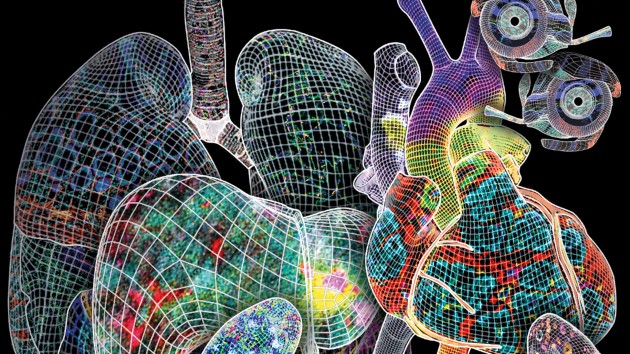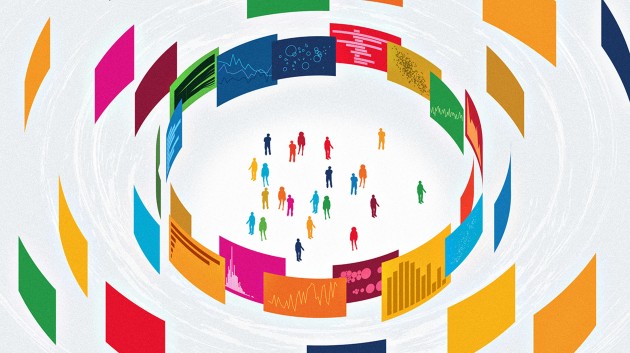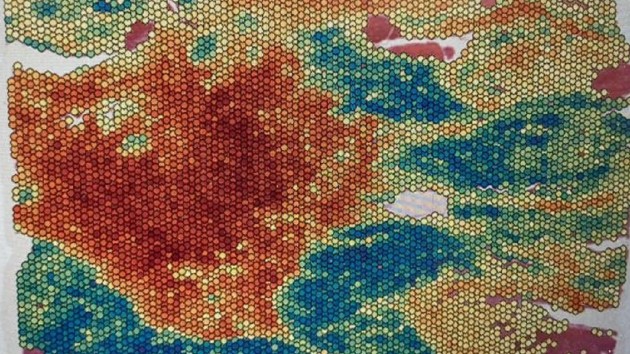Collections
-
-
Collection |
 Human BioMolecular Atlas Program
Human BioMolecular Atlas Program
Inaugurated in 2018, the Human BioMolecular Atlas Program (HuBMAP) endeavours to construct comprehensive spatial maps that feature a range of biomolecules such as RNA, proteins, and metabolites in human organs at single-cell resolution.
Image: Heidi Schlehlein -
Collection |
 Artificial intelligence in genomics
Artificial intelligence in genomics
Communications Biology, Nature Communications and Scientific Reports welcome submissions that showcase how artificial intelligence can be used to improve our understanding of the genetic basis for complex traits or diseases.
Image: © [M] vchal / Getty Images / iStockOpen for submissions -
Collection |
 Biology of reproduction
Biology of reproduction
For this Collection, we encourage submissions that push forward our understanding of reproduction and its impact on offspring in both model organisms and human studies.
Image: © [M] Design Cells / stock.adobe.comOpen for submissions -
Collection |
 Progress towards the Sustainable Development Goals
Progress towards the Sustainable Development Goals
The year 2023 marks the mid-point of the 15-year period envisaged to achieve the Sustainable Development Goals, targets for global development adopted in September 2015 by all United Nations Member States.
Image: © Springer NatureOpen for submissions -
Collection |
 Agrobiodiversity
Agrobiodiversity
For this Collection, we welcome any submissions with novel exploration of biodiversity within agricultural settings across floral, faunal or microbial levels.
Image: [M] Matt Stilwell / stock.adobe.comOpen for submissions -
Collection |
 Spatial biology in cancer
Spatial biology in cancer
This Collection welcomes studies which apply spatial profiling technologies in pre-clinical or translational settings as well as in basic cancer research.
Image: Ruby Yun-Ju HuangOpen for submissions -
Collection |
 Innovations in Stem Cell Biology 2023
Innovations in Stem Cell Biology 2023
Stem cell models of development, regeneration, and disease are quickly advancing. New technologies and concepts are continuously combined with existing knowledge to create more realistic systems to improve our understanding of these intricate processes. In this collection, we highlight papers published in 2022-2023 across Nature Portfolio journals on topics including embryonic development and stem cells, reproductive biology, synthetic tissues and embryo models, clinical and translational research and tissue stem cells.
Image: Jean-Baptiste Sibarita, Virgile Viasnoff, and Anne Beghin -
Collection |
 Shift work and circadian biology
Shift work and circadian biology
For this Collection, we encourage submissions that highlight recent advances in our understanding of the mechanisms by which different shift work patterns in human occupations disturb circadian rhythms.
Image: VectorMine / stock.adobe.comOpen for submissions -
Collection |
 Tara Pacific
Tara Pacific
The Tara Pacific program involved a 2-year continuous scientific expedition at sea to reveal new facets of coral reef biodiversity across the Pacific Ocean.
Image: © borisoff / stock.adobe.com -
Collection |
 DNA damage response and Immunity
DNA damage response and Immunity
This collection welcomes submission on the function of DNA repair processes in regulating immune responses and tumorigenesis at the molecular and cellular level, and the consequences on a systemic level.
Image: Kateryna_Kon / stock.adobe.comOpen for submissions -
Collection |
 Endocrine disruptors - from invertebrate systems to human patho-physiologies
Endocrine disruptors - from invertebrate systems to human patho-physiologies
This Collection welcomes submissions that highlight mechanistic and ecological advancements to our understanding on how endocrine disruptors impact ourselves and the world around us through altering cellular and systemic metabolic functions.
Image: es0lex / stock.adobe.comOpen for submissions

 Immunoepigenomics
Immunoepigenomics